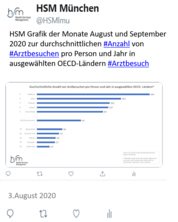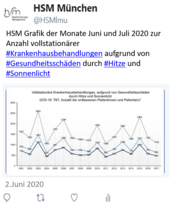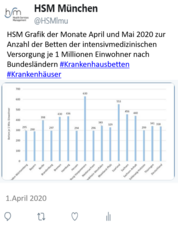Patterns of ambulatory medical care utilization in elderly patients with special reference to chronic diseases and multimorbidity - Results from a claims data based observational study in Germany.
| Authors/Editors: |
Bussche, H Van Den Schön, G Kolonko, T Hansen, H Wegschneider, K Glaeske, G Koller, D. |
|---|---|
| Publication Date: | 2011 |
| Type of Publication: | Articles in Refereed Journals (International) |
| ISBN/ISSN: | 1471-2318 |
| erschienen in: | BMC Geriatr. |
| Weitere Quellenangabe: | Volume 11(1), Page 54 |
Abstract
Background
In order to estimate the future demands for health services, the analysis of current utilization patterns of the elderly is crucial. The aim of this study is to analyze ambulatory medical care utilization by elderly patients in relation to age, gender, number of chronic conditions, patterns of multimorbidity, and nursing dependency in Germany.
Methods
Claims data of the year 2004 from 123,224 patients aged 65 years and over which are members of one nationwide operating statutory insurance company in Germany were studied. Multimorbidity was defined as the presence of 3 or more chronic conditions of a list of 46 most prevalent chronic conditions based on ICD 10 diagnoses. Utilization was analyzed by the number of contacts with practices of physicians working in the ambulatory medical care sector and by the number of different physicians contacted for every single chronic condition and their most frequent triadic combinations. Main statistical analyses were multidimensional frequency counts with standard deviations and confidence intervals, and multivariable linear regression analyses.
Results
Multimorbid patients had more than twice as many contacts per year with physicians than those without multimorbidity (36 vs. 16). These contact frequencies were associated with visits to 5.7 different physicians per year in case of multimorbidity vs. 3.5 when multimorbidity was not present. The number of contacts and of physicians contacted increased steadily with the number of chronic conditions. The number of contacts varied between 35 and 54 per year and the number of contacted physicians varied between 5 to 7, depending on the presence of individual chronic diseases and/or their triadic combinations. The influence of gender or age on utilization was small and clinically almost irrelevant. The most important factor influencing physician contact was the presence of nursing dependency due to disability.
Conclusion
In absolute terms, we found a very high rate of utilization of ambulatory medical care by the elderly in Germany, when multimorbidity and especially nursing dependency were present. The extent of utilization by the elderly was related both to the number of chronic conditions and to the individual multimorbidity patterns, but not to gender and almost not to age.





